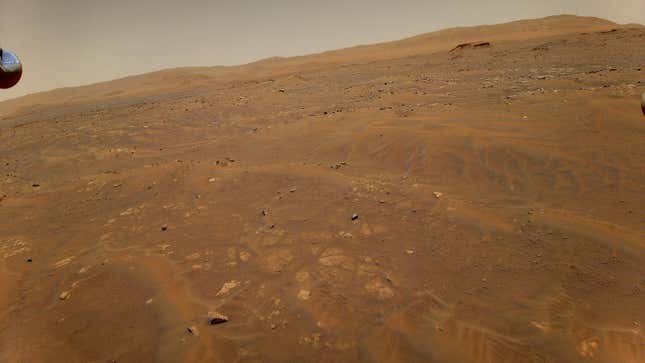
With its helicopter babysitting duties all wrapped up, Perseverance can finally get down to the serious business of searching the Martian landscape for signs of former life.
“We are putting the rover’s commissioning phase as well as the landing site in our rearview mirror and hitting the road,” Jennifer Trosper, Perseverance project manager at NASA’s Jet Propulsion Laboratory, said in a statement.
Indeed, Perseverance is no longer needed during tests of the wildly successful Ingenuity helicopter, which is now performing flights without the rover’s watchful eyes. Freed up from that task, the rover can now embark on its first science expedition.
The next 14 weeks will see Perseverance explore a 1.5-square-mile [4-square-kilometer] area within Jezero crater, as it works to fulfill a slew of science objectives. These goals include an enhanced understanding of the region’s geology, assessing its prior potential to harbor life, and of course, the ultimate prize: finding signs of ancient microbial life.
To that end, Perseverance will locate and collect promising rock and sediment samples, some of which will be tucked away inside canisters for a future Mars mission to retrieve and deliver to Earth for analysis. The rover will also take measurements and perform technical tests in anticipation of future human and robotic missions to the Red Planet.
The first step is for the SUV-sized vehicle to reach a scenic overlook, where it will gaze upon ancient geological features in the crater. Percy’s auto-navigational capabilities and sampling systems will fully come online during this process.
From there, the rover will begin its investigations of two specific areas, both of which are believed to host deep and ancient layers of exposed bedrock. The first area has been dubbed the Crater Floor Fractured Rough, which, as its name implies, is filled with craters. The second area is called Séítah, which means “amidst the sand” in Navajo. Séítah has its “fair share of Mars bedrock but is also home to ridges, layered rocks, and sand dunes,” according to NASA.

The rover’s route has already been decided, and the map above shows where Perseverance will be roving over the next 100 Sols, or Martian days. Mission planners have their “route planned, complete with optional turnoffs and labeled areas of interest and potential obstructions in our path,” Kevin Hand, an astrobiologist at NASA’s JPL and a co-lead on the project, explained in the statement.
The Séítah unit of exploration is expected to be challenging, as it features a complex of sand dunes. To avoid problems, the rover will navigate the boundary between this region and the adjacent Crater Floor Fractured Rough. When an area of interest within Séítah is identified, Percy will make a beeline to that spot, perform its scientific duties, and then return to a safe spot. The team is planning to identify at least four locations within these two areas that are deemed most capable of revealing the crater’s early environment and geologic history. It’s from these four spots that the rover will take its samples.
“Starting with the Crater Floor Fractured Rough and Séítah geologic units allows us to start our exploration of Jezero at the very beginning,” said Hand. “This area was under at least 100 meters [328 feet] of water 3.8 billion years ago. We don’t know what stories the rocks and layered outcrops will tell us, but we’re excited to get started.”
Several months from now, once this phase of the mission is complete, the rover will return to the Octavia E. Butler Landing Site. By that point it should have traversed anywhere between 1.6 and 3.1 miles (2.5 and 5 km), while eight of its 43 sample tubes should be filled with Martian dirt and rocks.
This first science campaign sounds great, but the next mission promises to be even better. Perseverance will travel north and then west to Jezero’s delta region, which once featured the confluence of an ancient river and lake. The delta could be rich in carbonates, that is, minerals capable of preserving fossilized signs of life. If microbial life once existed on Mars—and that’s still a big if—this delta would’ve been a perfect place for it to live.
Perseverance may be embarking on its first official scientific expedition, but to be fair, the rover has been sciencing from the moment it landed in February. In addition to recording sounds on Mars, it’s already produced tiny amounts of oxygen from the carbon dioxide-rich Martian atmosphere.